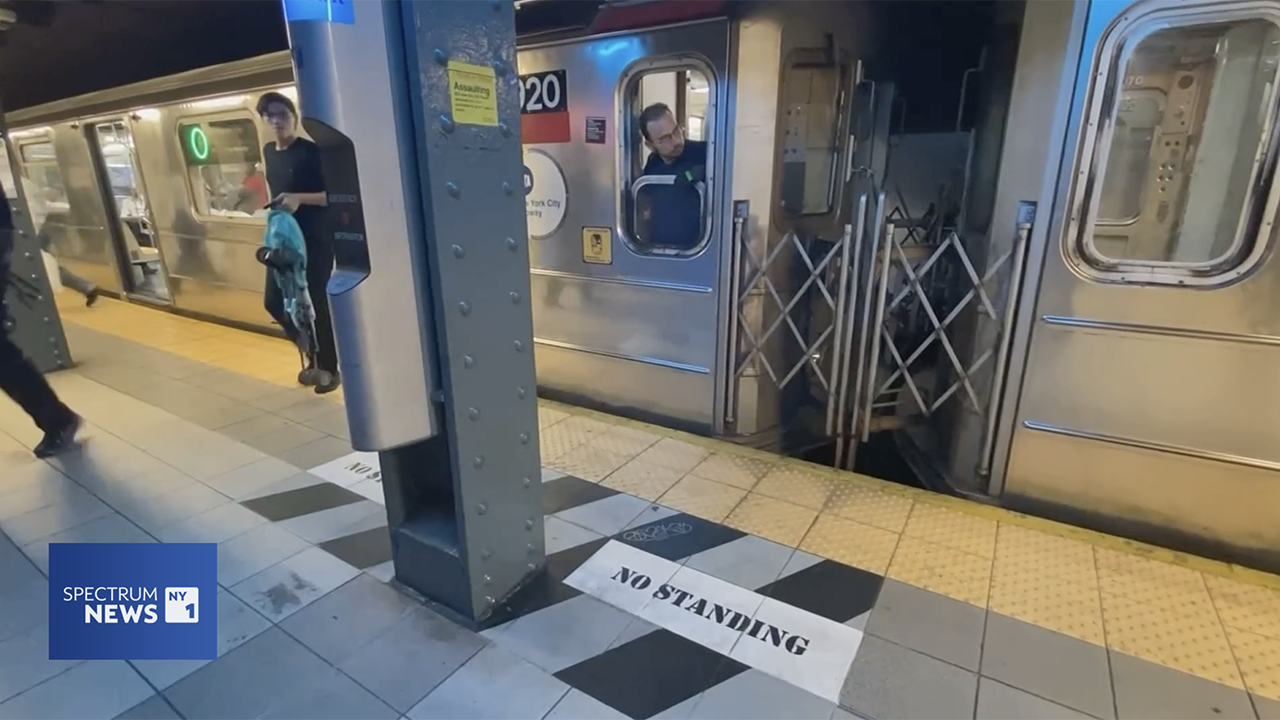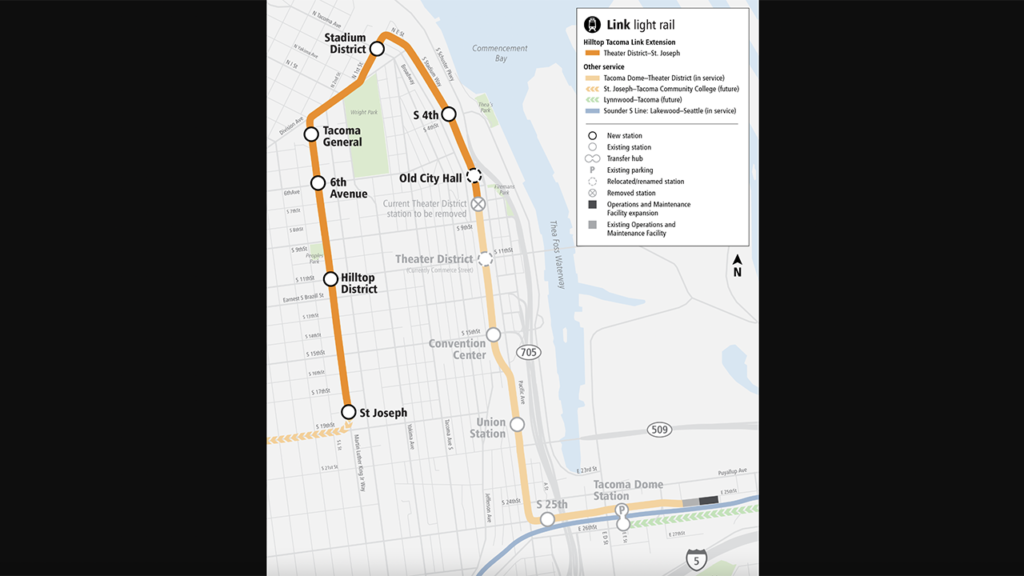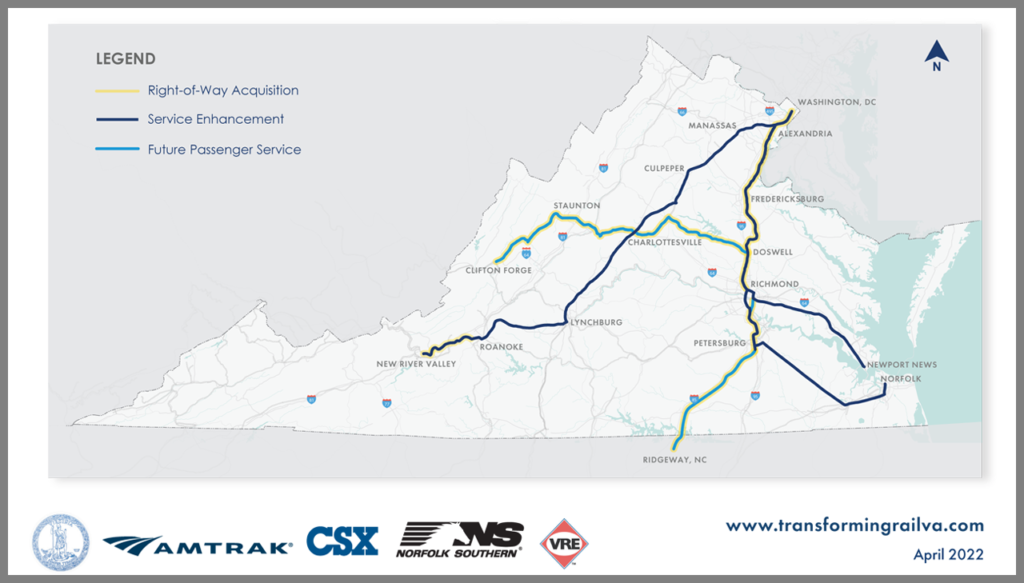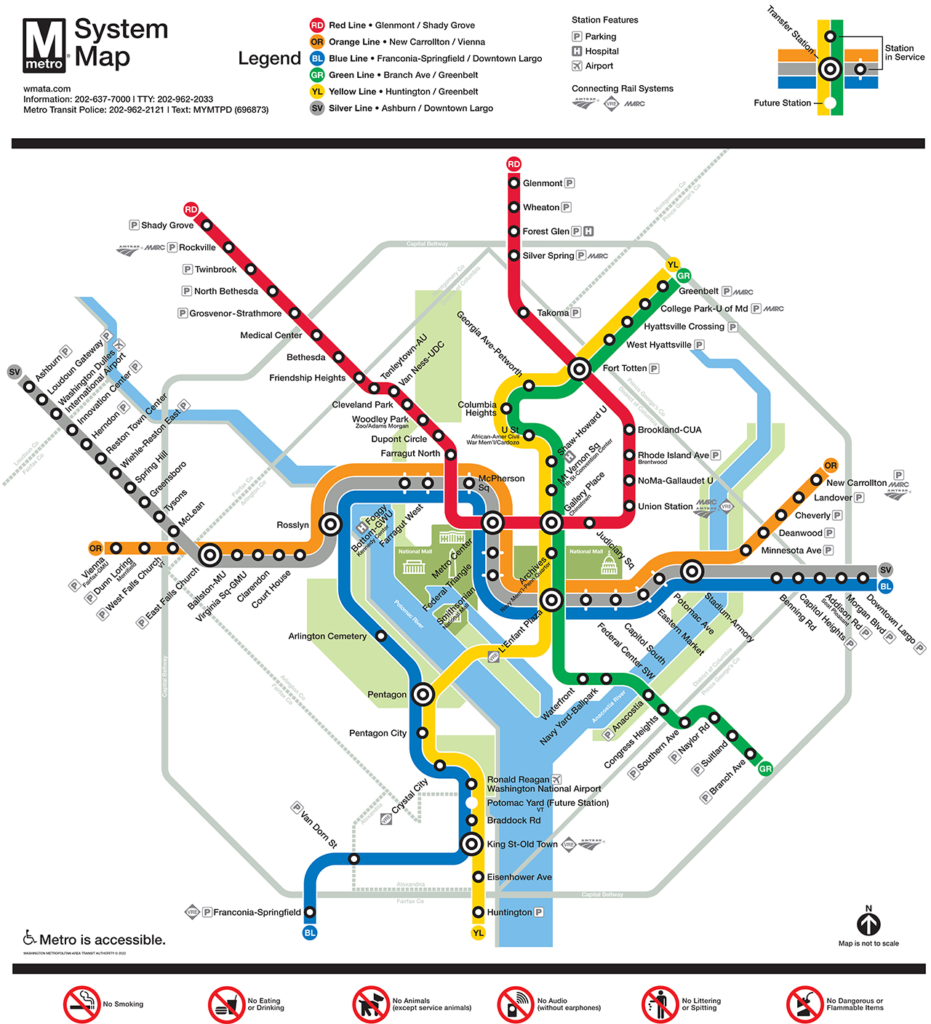
Transit Briefs: NYMTA, Sound Transit, VPRA, WMATA
Written by Marybeth Luczak, Executive Editor
New York MTA and union officials are testing “no standing” zones at Harlem’s 125th Street and Lexington Avenue subway station to help prevent rider assaults on conductors. (Screen Grab From Spectrum News NY1 Video)
New York Metropolitan Transportation Authority (MTA) is testing “no standing” zones on New York City Transit (NYCT) subway platforms to help eliminate rider assaults on conductors. Also, Seattle’s Sound Transit is beginning simulated service on the Hilltop Tacoma Link Extension; Jacobs will deliver general engineering consulting services for passenger rail under the Transforming Rail in Virginia infrastructure program; and Washington Metropolitan Area Transit Authority (WMATA) mulls expansion options.
New York MTA and union officials are testing “no standing” zones at Harlem’s 125th Street and Lexington Avenue subway station to help prevent rider assaults on conductors, Spectrum News NY1 and the New York Daily News reported. Platform decals have been added where conductors’ cabs come to a stop.
“The thought process was, if we could create a distance for conductors as the train enters the station, where customers do not stand, it gives a level of comfort to the conductor,” NYCT Senior Vice President of Subways Demetrius Crichlow told Spectrum News NY1. Crichlow noted that “[t]hey’ll still address customers for customer service. They will still have to lower the window, but it does give them the level of alertness that there might be a potential thing that they need to be aware of.”
The idea stems from a worker safety panel of NYCT and union officials, according to the cable news television channel’s July 13 report.
“‘This is a relatively small and early step in major effort protect transit workers from assaults,’ TWU Local 100 President Richard Davis said in a statement” to the New York Daily News. “‘There will have to be an educational component, and possibly an enforcement component, to make these no-standing zones effective, but we are sending a message that assaults are unacceptable and Conductors must be protected,’ he added.”
MTA told both media outlets that the Harlem station was chosen for the pilot due to increasing assaults on employees, particularly conductors.
“Crichlow said the MTA would monitor the effectiveness of the zones at E. 125th, and could expand the program to other stations systemwide by the fall,” according to the July 12 New York Daily News report. He added that fines or penalties for standing in the zones are not currently planned. “Right now we’re just asking our customers to show a little respect to the area and our crews,” he told the newspaper.

With civil construction now complete for the 2.4-mile Hilltop Tacoma Link Extension (see map above), Sound Transit on July 13 reported that light-rail test trains will begin running on the entire length of the T Line from Tacoma Dome to the Hilltop District. The extension project doubles the length of the T Line, and includes one relocated station, six new stations, and an expansion of the Operations and Maintenance Facility in Tacoma to accommodate five new light rail vehicles. Sound Transit expects a late summer launch, with a projected ridership of 2,000-4,000 daily riders by 2026.

Jacobs on July 13 reported being selected as the prime consultant to the Virginia Passenger Rail Authority (VPRA) to deliver general engineering consulting services for passenger rail initiatives under its Transforming Rail in Virginia infrastructure program. The one-year contract includes an option to renew for an additional three years; VPRA estimated its value at up to $10 million per year. Jacobs will support the planning, design, construction and overall maintenance of projects that include doubling the commonwealth-supported Amtrak intercity passenger rail service and increasing the Virginia Railway Express (VRE) commuter rail service over the next decade. Jacobs said it would use market analysis and travel demand forecasting to provide comprehensive support for the improvement and expansion of the existing Amtrak service and restoration of Amtrak’s Roanoke-to-New River Valley service.
Jacobs will also support general planning and consulting services for the Transforming Rail in Virginia infrastructure program under another contract, which VPRA also estimates to be up to $10 million per year, with the option to renew for an additional four years.
Background
In December 2019, then-Virginia Gov. Ralph Northam announced a rail agreement between the commonwealth and CSX to begin the Transforming Rail in Virginia program. Through a definitive agreement with the Class I railroad in 2021, Virginia acquired 384 miles of CSX’s right-of-way and 223 miles of track in rail corridors paralleling I-95, I-64 and I-85. This includes half of the CSX-owned railroad right-of-way between Washington, D.C., and Petersburg; all of the CSX-owned (but out of service) right-of-way between Petersburg and Ridgeway, N.C.; nearly all of the CSX-owned right-of-way between Doswell and Clifton Forge; and track within the right-of-way purchased by Virginia also becomes Virginia property.
Also in 2021, Gov. Northam announced that the commonwealth reached an agreement with Norfolk Southern (NS) to expand passenger rail to southwest Virginia. In partnership with the Class I railroad, the commonwealth last year acquired 28.5 miles of the NS-owned right-of-way from the Salem Crossovers to Christiansburg. The acquisition of railroad right-of-way and tracks, along with infrastructure improvements and improved operations, will allow for the expansion of passenger rail services.

While WMATA faces a projected $750 million deficit next fiscal year, the Board considered system expansion, including new stations in Georgetown and National Harbor, during a July 13 meeting, The Washington Post reported.
“It is responsible for us to be planning for the future and sharing with the region what’s possible and what benefit can come from enhancing the system, and that’s what this is really all about,” WMATA Board Member Matthew F. Letourneau said at the meeting, according to the newspaper. “But I really can’t say loudly enough that this is a planning exercise. This is a planning document. It is not an immediate plan.”
According to The Washington Post, the Board-reviewed “early” proposals were “primarily aimed at resolving a lack of tunnel capacity between Foggy Bottom in D.C. and Rosslyn in Virginia. Metro [WMATA] officials said growth around stations that use the tunnel is projected to create crowding problems—something that had been occurring before the pandemic.”
Two options that would provide the best service and economic benefit, according to WMATA officials, are: “break[ing] the Silver Line off into its own track that would allow for express service and include new stops in Georgetown and Ivy City, one of the District’s fastest-growing areas,” and “realigning the Blue Line to stop in Georgetown and Union Station before shifting south and connecting to the D.C. waterfront and Navy Yard, serving areas such as Buzzard Point, St. Elizabeths and National Harbor,” the newspaper reported. “The line would cross the Woodrow Wilson Bridge to Alexandria.” Each option, the paper noted, originated before the pandemic; includes building a new tunnel spanning the Potomac River; and costs approximately $35 billion.
WMATA officials said they want to “resolve limitations created by too few tracks crossing the Potomac,” The Washington Post reported. Additionally, they “want the system to be a part of Union Station’s renovation plans, saying they also want to correct poorly designed features, such as having two stations, Farragut North and Farragut West, that don’t connect but are less than two blocks apart.”
WMATA planners “acknowledge that crowding issues near the tunnel no longer exist as ridership lags from pre-pandemic times,” according to The Washington Post, but they said “growth around stations that use the tunnel continues while ridership in recent months has jumped more quickly than any time since 2020.”
Planning now is important to ensure that “proposals for a costly tunnel project line up with federal grant stipulations” and that WMATA is prepared for “ridership rebounds and passenger growth,” according to WMATA officials, the newspaper reported.



